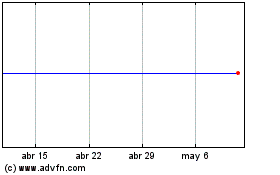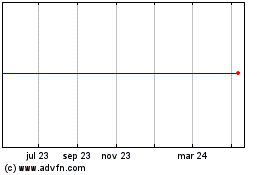By Aaron Tilley
Salesforce.com Inc.'s proposed purchase of workplace
collaboration software pioneer Slack Technologies Inc. was prompted
by the pandemic, but its success will hinge on whether it delivers
in the post-lockdown world, analysts say.
Salesforce for years had explored potential deals with Slack,
including investing in the company, according to people familiar
with the talks. But it wasn't until Covid-19 sent millions of
people home to work remotely that Salesforce came to terms with the
app maker -- agreeing to pay more than 50% above Slack's closing
price the day before The Wall Street Journal broke news of the
talks.
Salesforce Chief Operating Officer Bret Taylor, one of the
architects of the $27.7 billion deal, including cash and debt, said
that how its customers and the wider business world reacted to the
health crisis, by more rapidly adopting digital tools, drove the
two companies together.
"The technology that Slack made felt more relevant than ever
before. That really motivated us to get into these discussions
now," Mr. Taylor said in an interview.
The deal will transform Salesforce into one of the largest
players in business software, and, analysts say, help turn it into
a more formidable opponent against Microsoft Corp., which has been
pushing its Teams software suite -- which includes Slack-like
functions -- as a new operating system for companies.
But the acquisition comes with challenges, and risks.
"Slack is a nice start, but it's not the end," said Gregg
Johnson, a former Salesforce executive who led development of the
company's private social-network product called Chatter and left
the company in 2016. "If Salesforce wants to compete head-to-head
with Microsoft, they need more than what Slack has to offer."
One area the company may need to beef up, Mr. Johnson said, is
in video technology -- a feature for which Microsoft and Zoom Video
Communications Inc. have drawn investor enthusiasm while Slack
largely missed out.
And the price Salesforce is paying for Slack "seems rich," UBS
analyst Karl Keirstead said, driving up the stakes to deliver an
attractive return for the investment. Analysts broadly trimmed
their expectations for Salesforce's profitability to reflect the
addition of Slack, which has been posting losses.
Salesforce, which spent $15 billion last year on data-analytics
platform Tableau Software Inc., has drawn analyst and investor
criticism for some of its deal making and the impact on its
profitability. Salesforce shares are down around 14% since the
Slack deal news first surfaced.
Mr. Taylor arrived at Salesforce through one of those
acquisitions, when the company bought document collaboration
startup Quip Inc. in 2016 for more than $500 million. The Quip
acquisition was part of an earlier effort by Chief Executive Marc
Benioff to break into the workplace-collaboration market, though
analysts say it hasn't become a meaningful success.
The company didn't respond to a request for comment on how Quip
is doing.
Salesforce said it would make Slack a primary interface its
customers will use to tap into its broader suite of software tools.
But some analysts argue that bringing Salesforce's software
together with Slack's could be a challenge or take time. When
Microsoft bought the business-focused social-media network LinkedIn
Corp. in 2016, it moved slowly on the integration in part out of
concern moving quickly could be disruptive.
Slack had long been considered an acquisition target by
analysts, but Chief Executive Stewart Butterfield pursued a solo
path as he preached a vision of an office in which collaboration
software was an alternative to office email and a platform around
which companies could integrate various business tools.
Slack rejected a takeover proposal from Microsoft in 2015, and
the startup went public last year.
To assemble the deal that was unveiled Tuesday, Mr. Taylor, a
former chief technology officer at Facebook Inc., and Mr.
Butterfield drew on personal ties built up over more than a decade.
The two executives, who both have a history working at startups,
got to know each other, Mr. Taylor said, when Mr. Butterfield ran
Flickr, the social photo-sharing platform that was bought by Yahoo
Inc.
"I've known Stewart for many years, and I've retained that
relationship since I've been at Salesforce," Mr. Taylor said. "That
has been really an asset in these discussions."
Mr. Butterfield, speaking at Salesforce's annual customer
meeting on Wednesday, said, "This is a pivotal moment and the
opportunity to really transform the way that we work so that we're
not as reliant on the physical office."
When Mr. Taylor and Mr. Butterfield put forward their idea for a
deal, Mr. Benioff said he was easily convinced to pay top dollar
for Slack. "This is bigger than I've ever thought it could be," he
told analysts on Tuesday, as Salesforce posted record quarterly
sales and a revenue outlook that beat Wall Street expectations.
The proposed transaction isn't just Salesforce's largest, it
also the latest this year in which a big tech company has used its
pandemic-fueled stock price to help pay for a costly
acquisition.
Graphics chip maker Nvidia Corp., whose shares soared as
videogaming took off with people quarantining at home, said it
would use stock in its planned $40 billion acquisition of
chip-design specialist Arm Holdings. And Advanced Micro Devices
agreed to buy chip maker Xilinx Inc. for $35 billion with
shares.
Salesforce shares were up around 50% this year when the Journal
first reported the company was in advanced talks to buy Slack. Mr.
Benioff said the company's success during the pandemic emboldened
it to strike. When the virus first struck, Salesforce was cautious,
he said.
"We were hiding, and we were like everyone else under our desks.
Then we've realized, wait a minute, we can succeed through
this."
Write to Aaron Tilley at aaron.tilley@wsj.com
(END) Dow Jones Newswires
December 03, 2020 12:47 ET (17:47 GMT)
Copyright (c) 2020 Dow Jones & Company, Inc.
Slack Technologies (NYSE:WORK)
Gráfica de Acción Histórica
De Dic 2024 a Ene 2025

Slack Technologies (NYSE:WORK)
Gráfica de Acción Histórica
De Ene 2024 a Ene 2025
